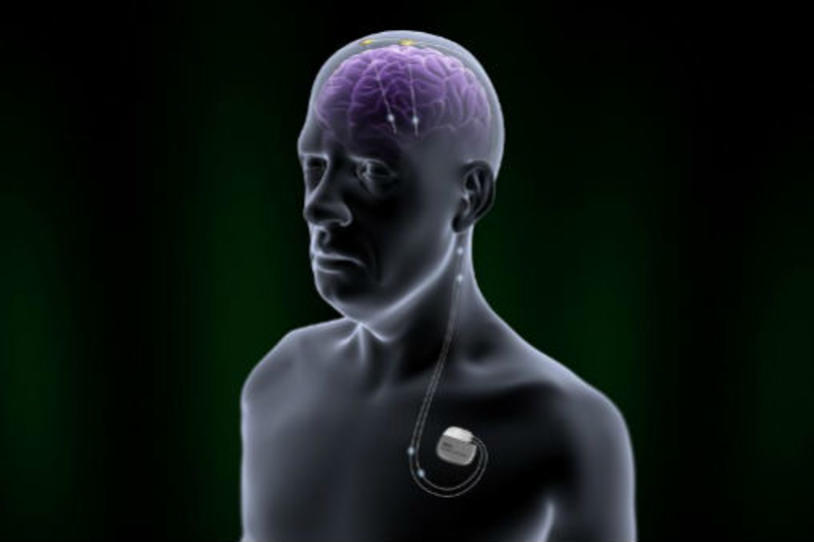
The Brio Neurostimulation System consists of a pacemaker-like device implanted in the chest and electrodes in the brain. Image via St. Jude Medical
The U.S. Food and Drug Administration (FDA) announced Friday that it had approved another deep brain stimulation (DBS) device for treatment of Parkinson’s disease and essential tremor.
The Brio Neurostimulation System from St. Jude Medical works in a similar way as the available DBS device: Medtronic’s Activa Deep Brain Stimulation Therapy System, approved in 1997 for tremor and in 2002 for Parkinson’s disease.
In DBS, a neurosurgeon implants a thin electrode into the brain, targeting motor and potentially other circuits that are not functioning properly. Small electrical pulses from a device similar to a cardiac pacemaker modulate the signals that cause some of the Parkinson’s motor symptoms. While a powerful treatment for many people living with Parkinson’s, this therapy does not treat all symptoms and isn’t suitable for all patients.
The Brio Neurostimulation System delivers electricity in a different way than conventional constant voltage DBS devices. Its constant current system delivers impulses regardless of brain changes and may reduce the number of reprogramming visits patients will require. Traditional constant voltage devices can react to brain changes over time. The Medtronic system is available in both constant current and constant voltage varieties.
Of the Brio, the FDA wrote in a press release, “Data supporting the safety and effectiveness of the device system included two clinical studies. One study included 136 patients with Parkinson’s disease and the other included 127 patients with essential tremor. In both studies, patients had symptoms, including tremors, that were not adequately controlled with drug therapy.”
“The Brio System’s approval is good news for the Parkinson’s patient community because the availability of another device and another company tin the market will stimulate more rapid development of DBS technology,” said Michael Okun, MD, professor of neurology and co-director of the University of Florida Health Center for Movement Disorders and national medical director for the National Parkinson Foundation. He was the lead author of a paper from the multi-center study testing the Brio Neurostimulation System for Parkinson’s disease.
While St. Jude Medical develops its strategy to bring new DBS options to market, the company is working on its next-generation DBS platform: the Infinity system, said spokesperson Justin Paquette. One of its features is a directional lead, which will send the electrical impulses only toward its intended target (instead of in all directions as current systems do).
“More options is always good news for patients,” said MJFF CEO Todd Sherer, PhD. “But we are not finished. MJFF is supporting studies to improve and expand the experience of deep brain stimulation for people with Parkinson’s.”
MJFF funds studies into next-generation DBS that would send electrical stimulation only when brain function requires, not continuously as devices do now. Such an advance, called closed-loop DBS, would extend battery life (lengthening time between replacement procedures) and perhaps help avoid side effects such as voice issues and expand the availability of DBS to patients not currently referred for the procedure due to confounding factors.
With MJFF funding, Dr. Okun is exploring DBS in a new area of the brain to ease postural instability and gait difficulties, a symptom difficult to treat. He is using closed-loop DBS designed to engage only when freezing of gait occurs.
Bottom line: The Brio Neurostimulation System is not yet available to patients, but FDA approval is a step toward the next wave of stimulation devices for Parkinson’s devices. Companies such as St. Jude Medical and Medtronic and investigators funded by MJFF are working hard to improve the options in this area and the impact of this treatment.
Watch a webinar on deep brain stimulation and the wave of research in this area.
